Spiders are an amazing group of organisms. Predominantly predatory in nature, their hunting abilities are indeed fascinating. The strategies they use to hunt prey are as varied as the spiders themselves. It is common knowledge that spiders feed on a variety of insects and other organisms. This may include small reptiles, the occasional bird and the like.
The diet of spiders often extends to other spiders too. It is also known to most of us that the female spider often kills and eats the male either during or soon after the mating is complete. This kind of sexual cannibalism has been documented and studied among many a spider species and there is some understanding of the advantages thereof. Spiders feeding upon others of their own kind outside the mating ritual and also feeding upon other spiders have also been documented sporadically.
Recently, while taking a slow-paced stroll on the JLR campus in Kabini, I was in for some interesting action. I noticed an Ornamental Tree Trunk Spider Herennia multipuncta suspended by a silken strand. I have always seen this spider on the tree trunk and never had I seen one hanging by a silk thread. Out of curiosity, I stood and watched. Slowly, but certainly, the spider went up. But the upward movement was very different. I have seen spiders, on many occasions, drop down on a silk thread and quickly ascend it too. But, this time it was different.
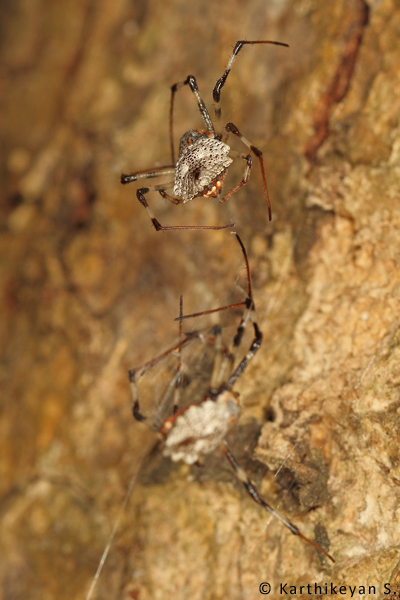
An Ornamental Tree Trunk Spider hanging by a silken thread.
I hadn’t paid too much attention as the spider kept moving back up. When it was almost touching the trunk, it turned and that was when I noticed its bright orange-red undersides. This got me curious again and I looked through the camera. What I observed took me by surprise. There was another female of the same species which was actually hauling the other spider up – that explained it! The spider being hauled up was limp and was not actively using its legs during the ascent.
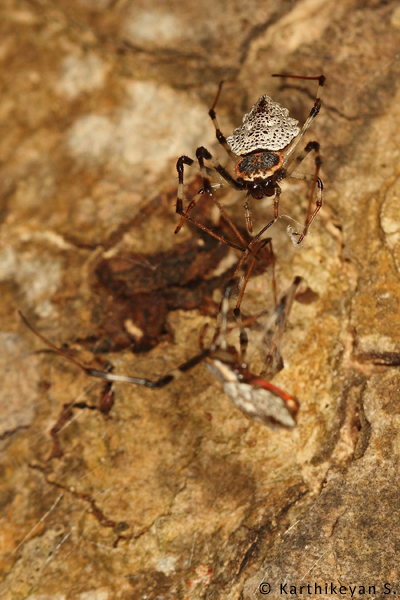
The limp spider is being hauled up by the one in control!
It was perhaps already bitten by the spider who was under control of things here. At this juncture, the limp spider turned exposing the bright underside.
I quickly clicked some images and was pleased with what I captured. The hunter was spraying silk wrapping the limp spider!
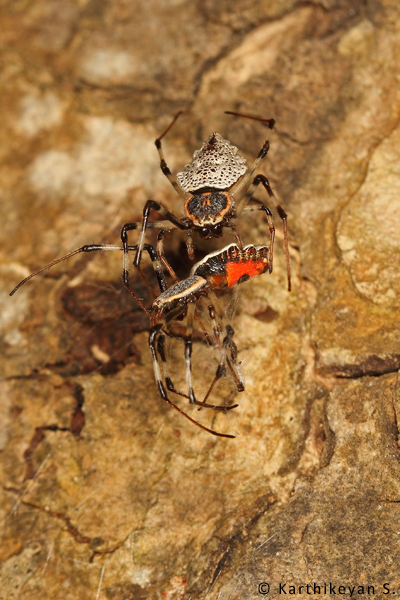
The bright orange-red of the undersides showing as the limp spider is turned. around.
I quickly clicked some images and was pleased with what I captured. The hunter was spraying silk wrapping the limp spider!
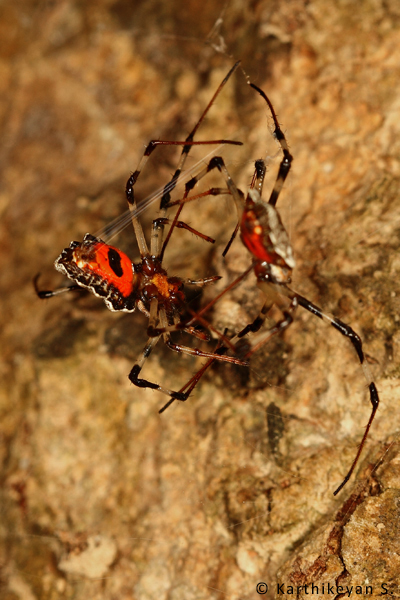
The predator spraying silk to wrap the prey!
This got me thinking of all other instances that I had seen a spider eat another spider – be it cannibalism or otherwise. I went rooting through my collection of spider images and here is what I found.
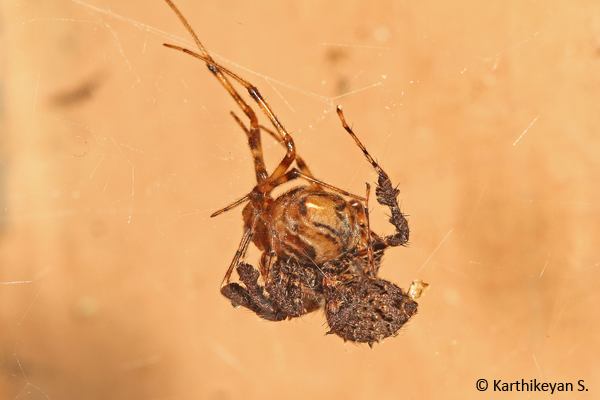
A Portia feeding on a Theridid spider. Read more about the Portia here.
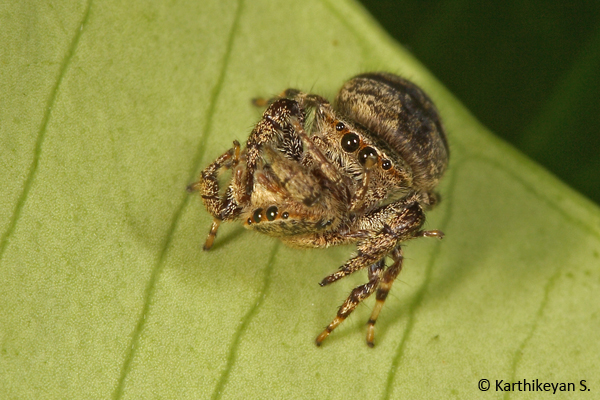
A Rhene sp. spider indulging in cannibalism !
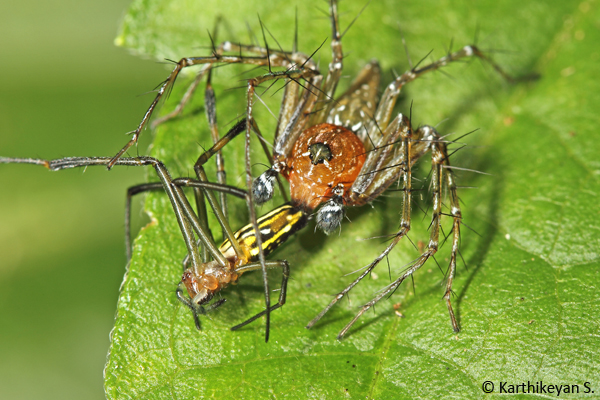
A Lynx Spider Hamadruas sp. feeding on another spider.
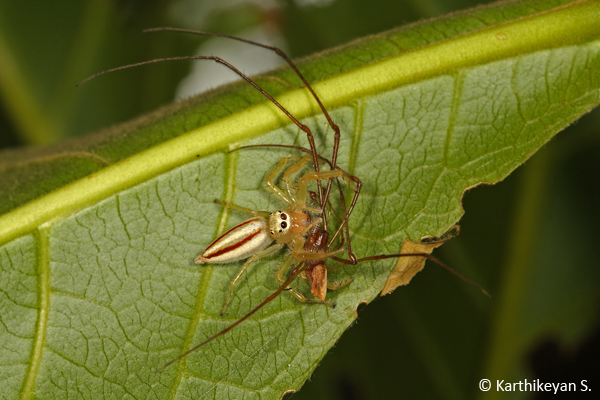
A female Two-striped Jumper Telamonia dimidiata feeding on a Long-jaw Spider.
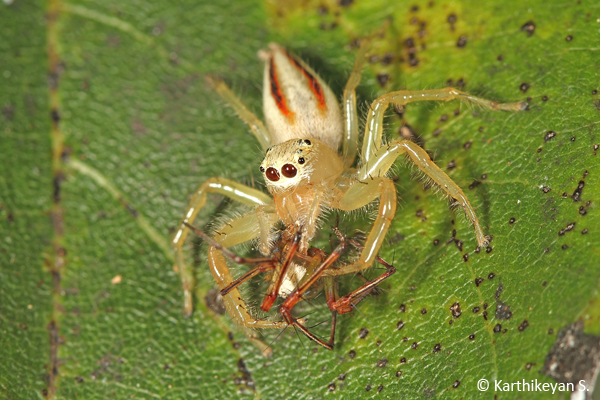
Another instance of a Two-striped Jumper feeding on a Lynx Spider.
For spiders, it seems, anything that moves is potential food! It could very well be just another spider species or perhaps one of its own kinds too. The impact of such cannibalistic and predatory behaviour is little understood. There is some cursory understanding particularly in case of the young spiders wherein such cannibalism seems to regulate their densities. However, there is a long way to go before we can have a reasonable understanding.
Though it may take long drawn structured studies to understand these nuances of Nature, periodic or regular observations of even the mundane can also throw up surprises like did the Ornamental Tree Trunk Spider!